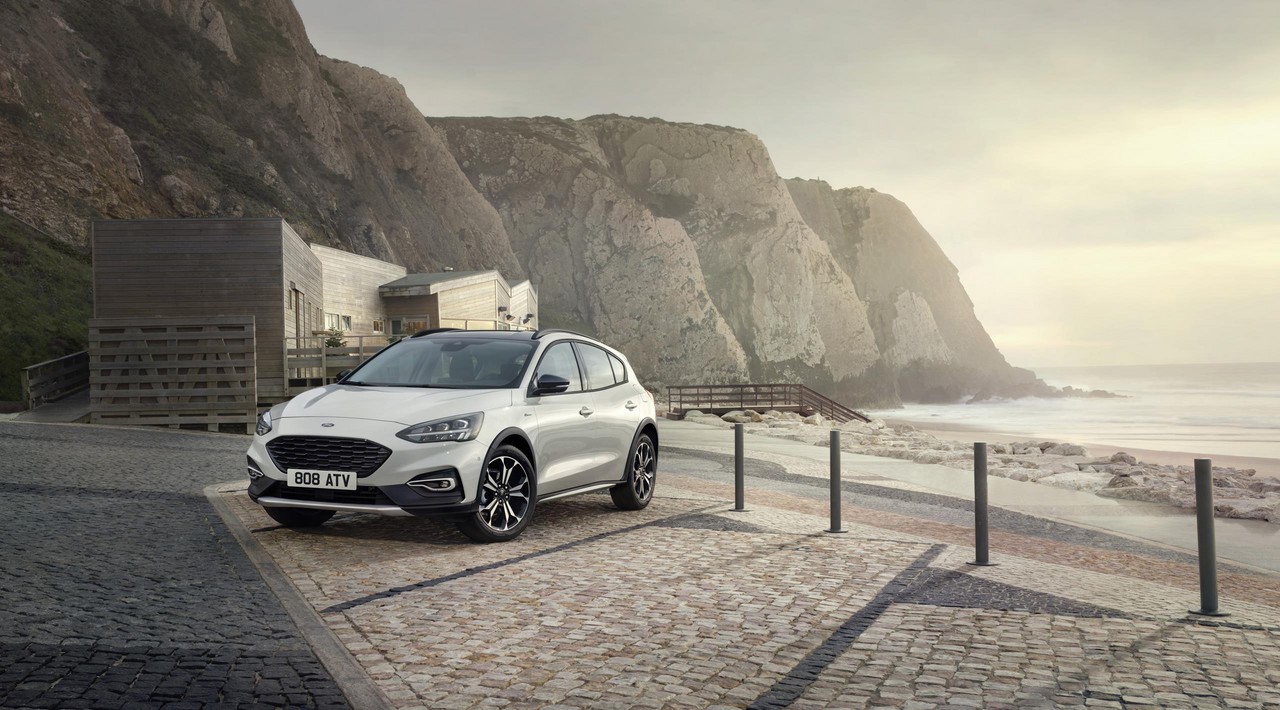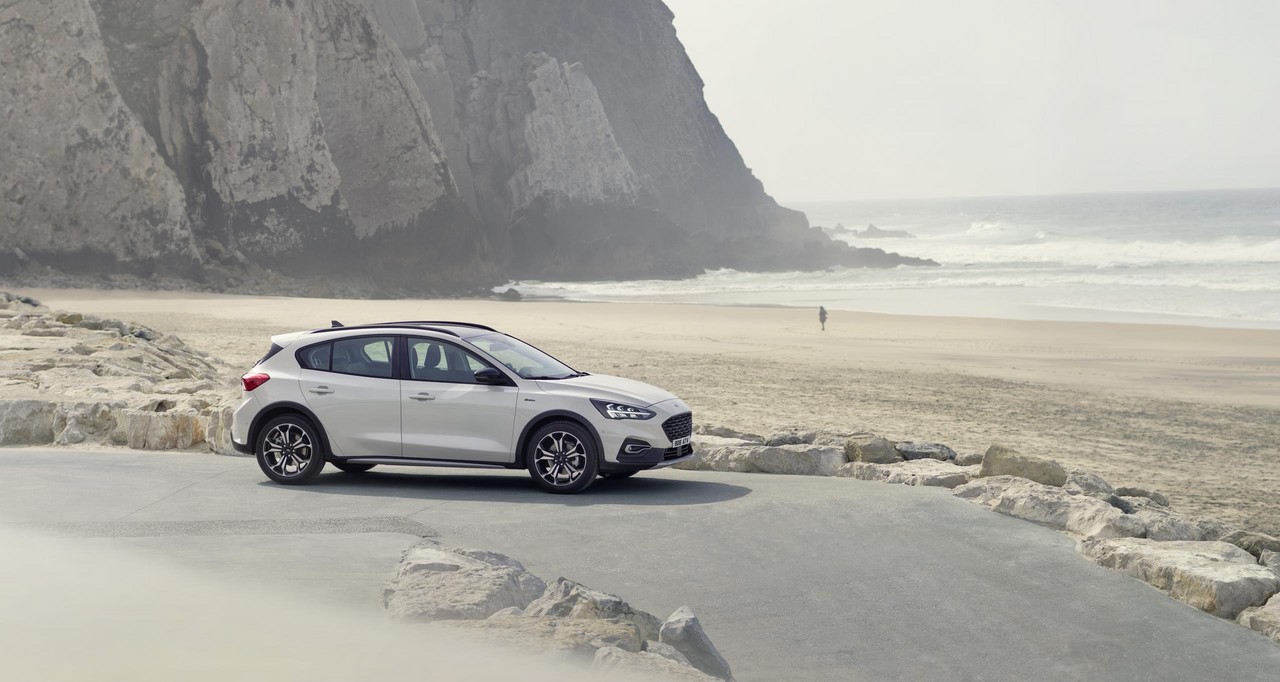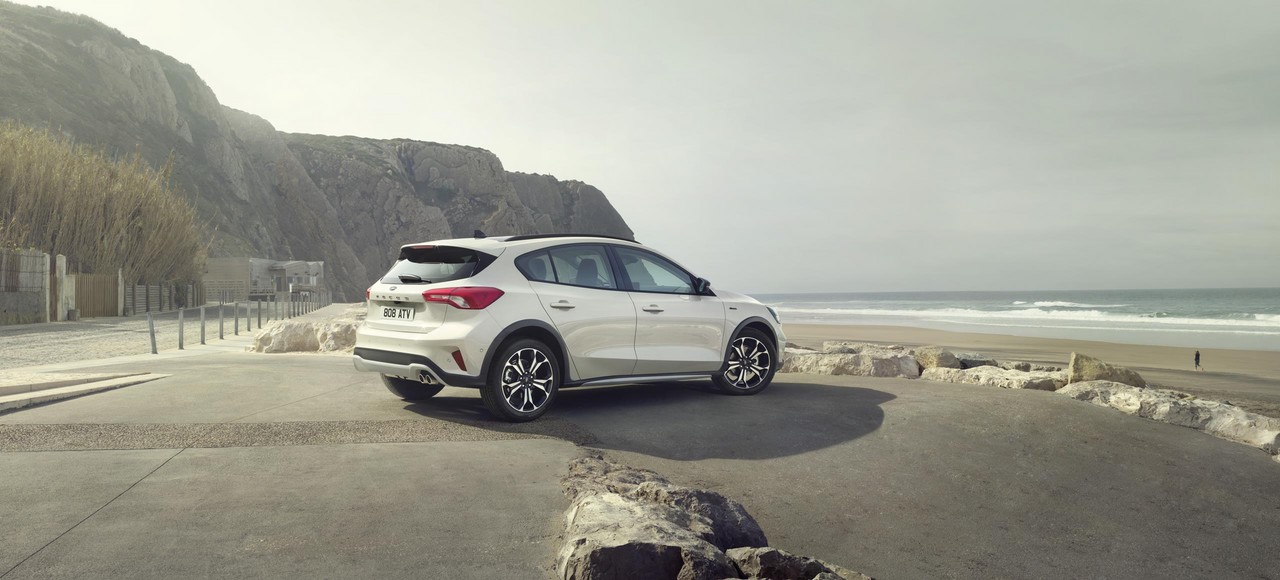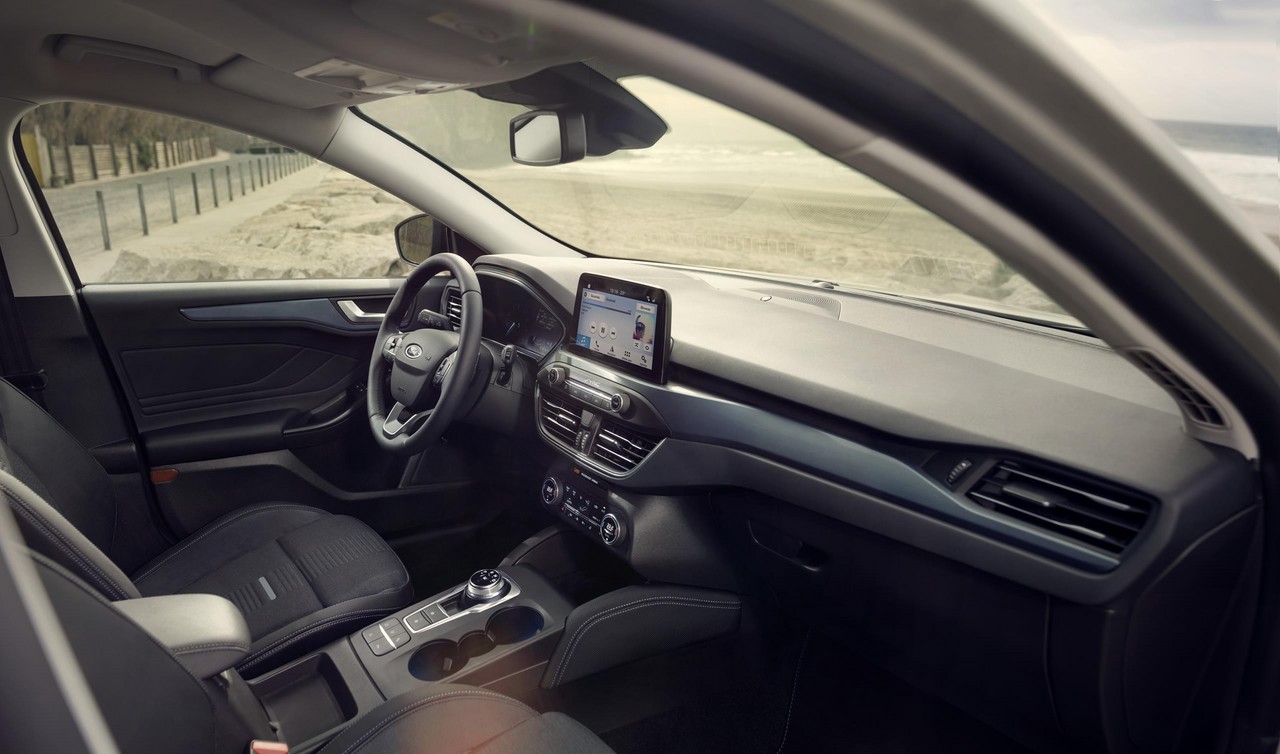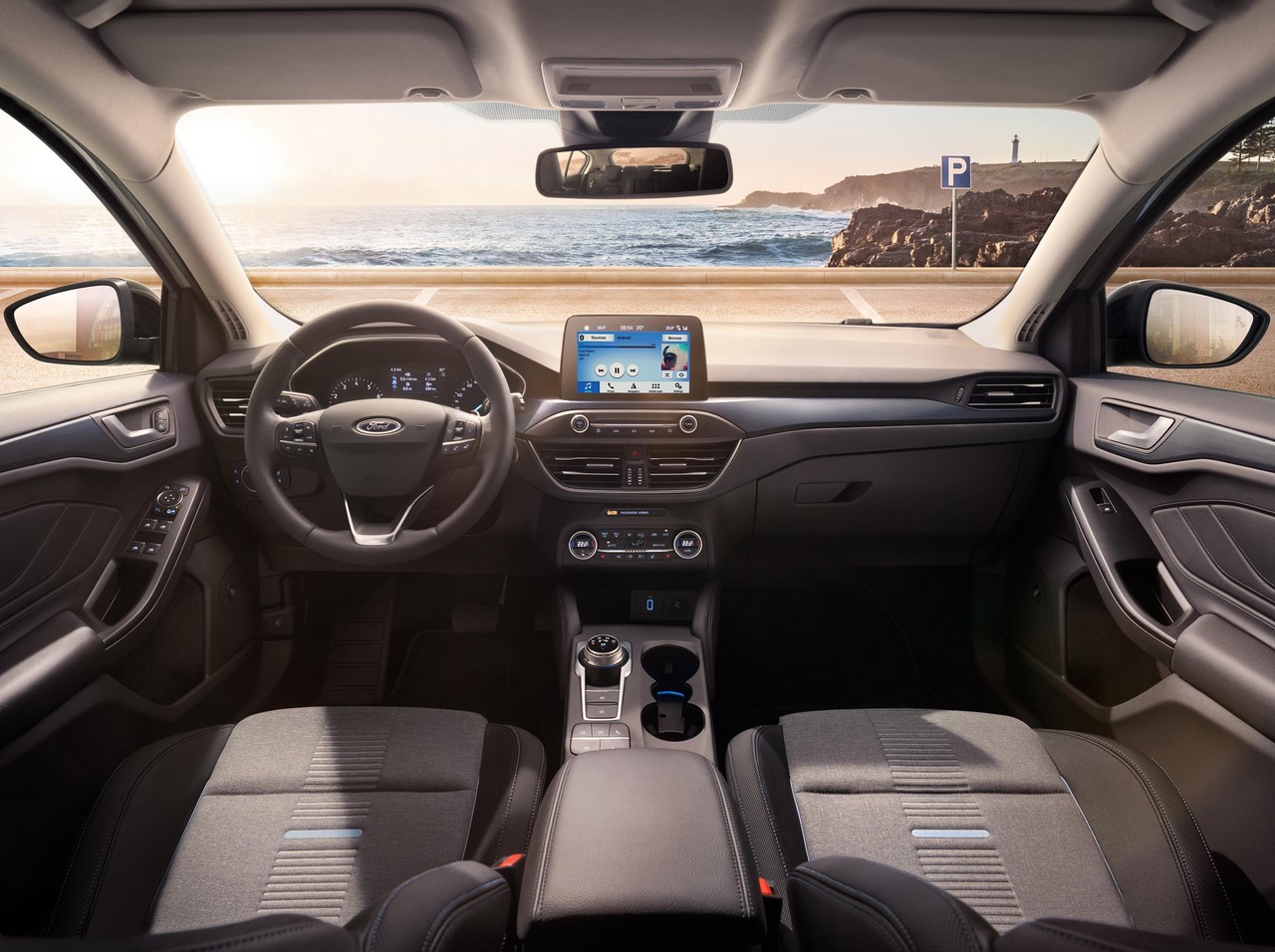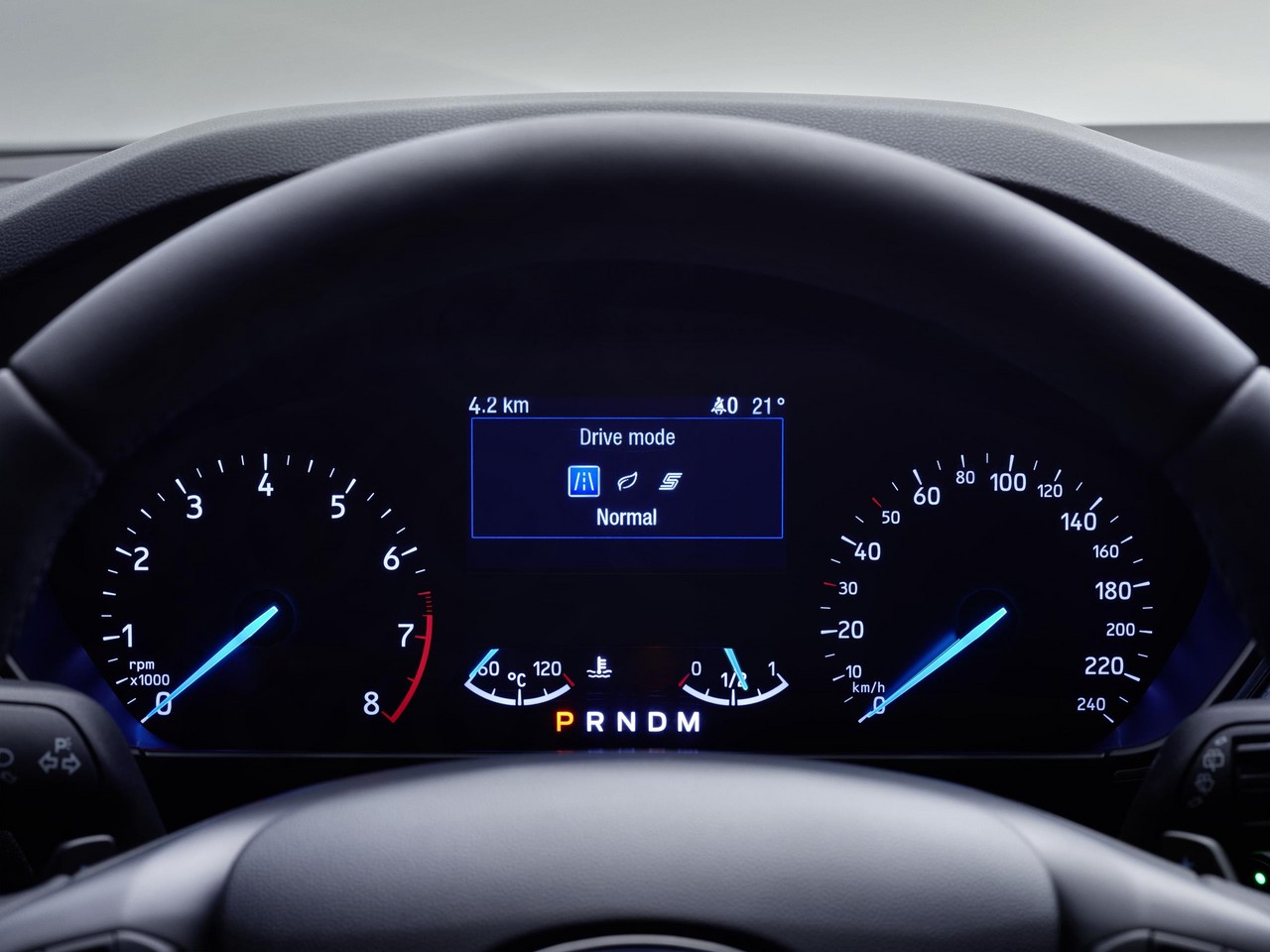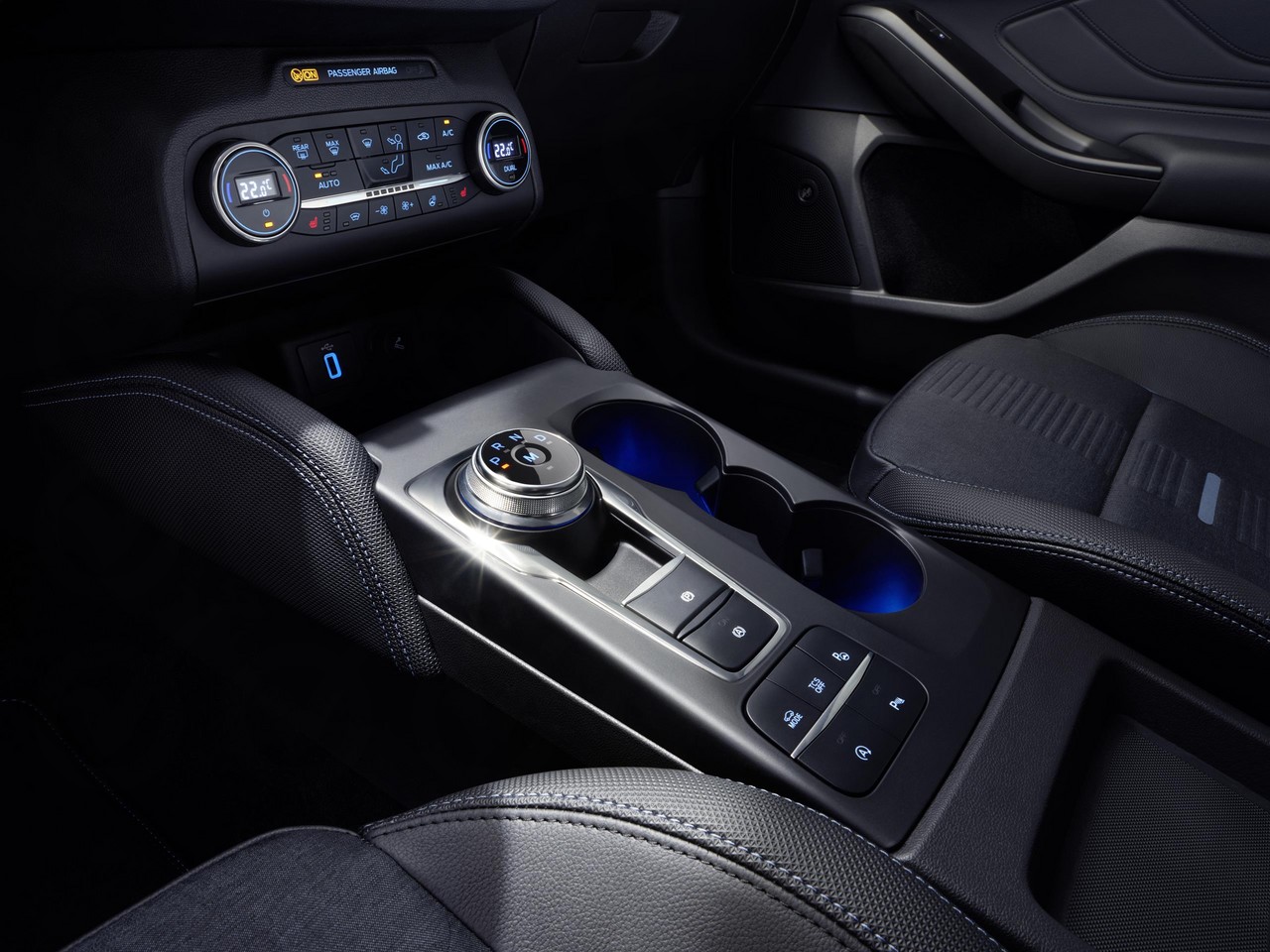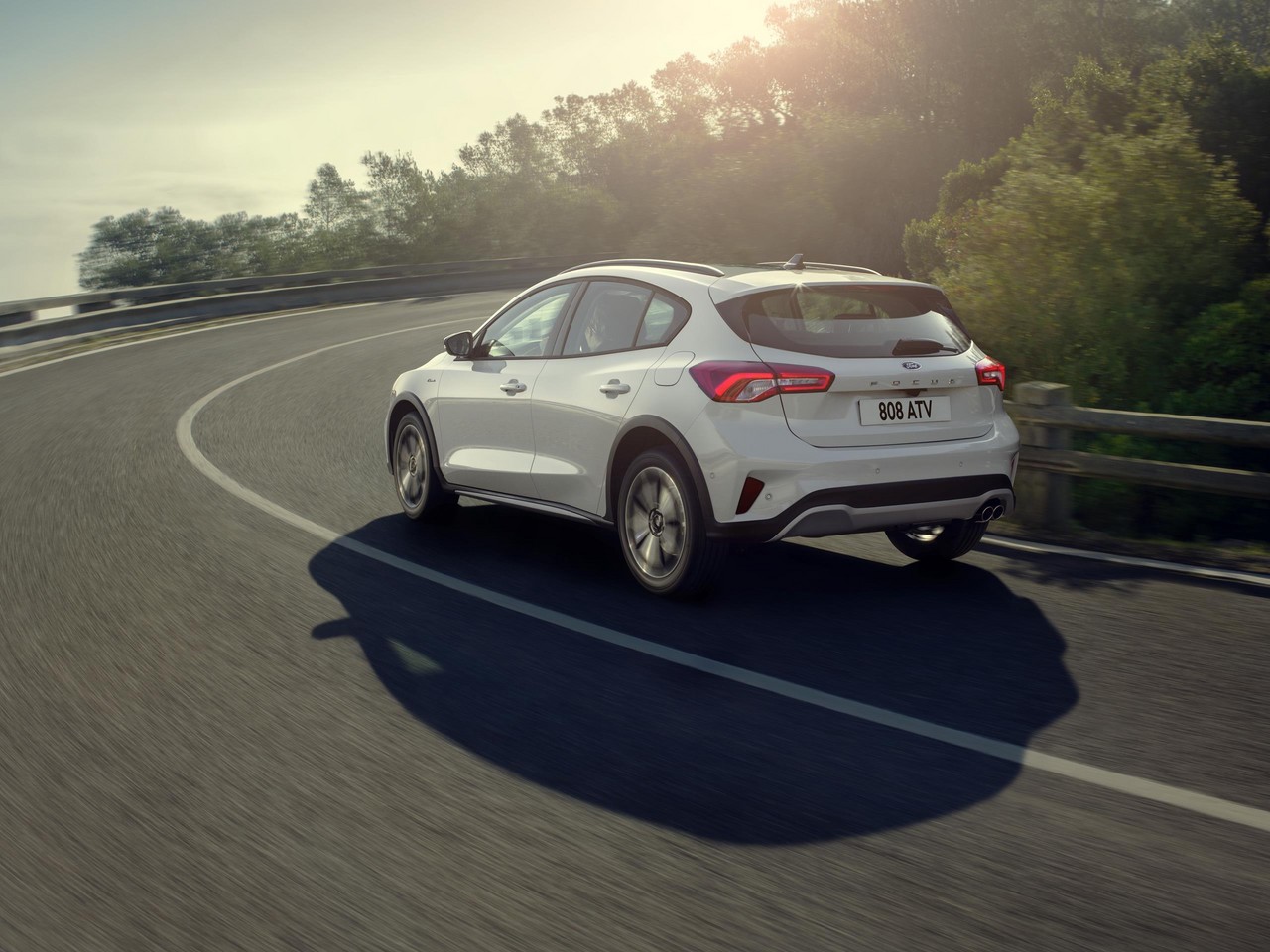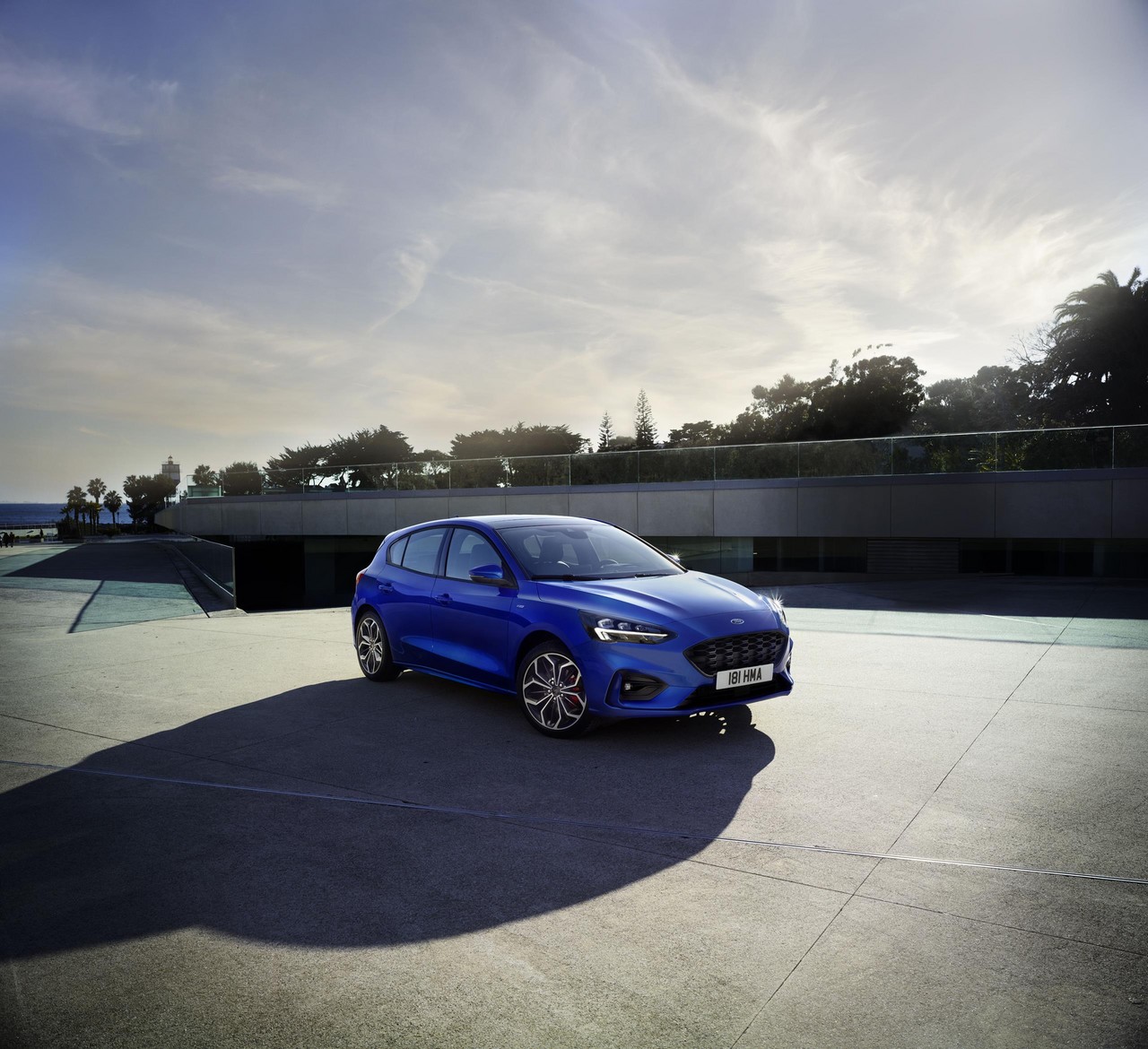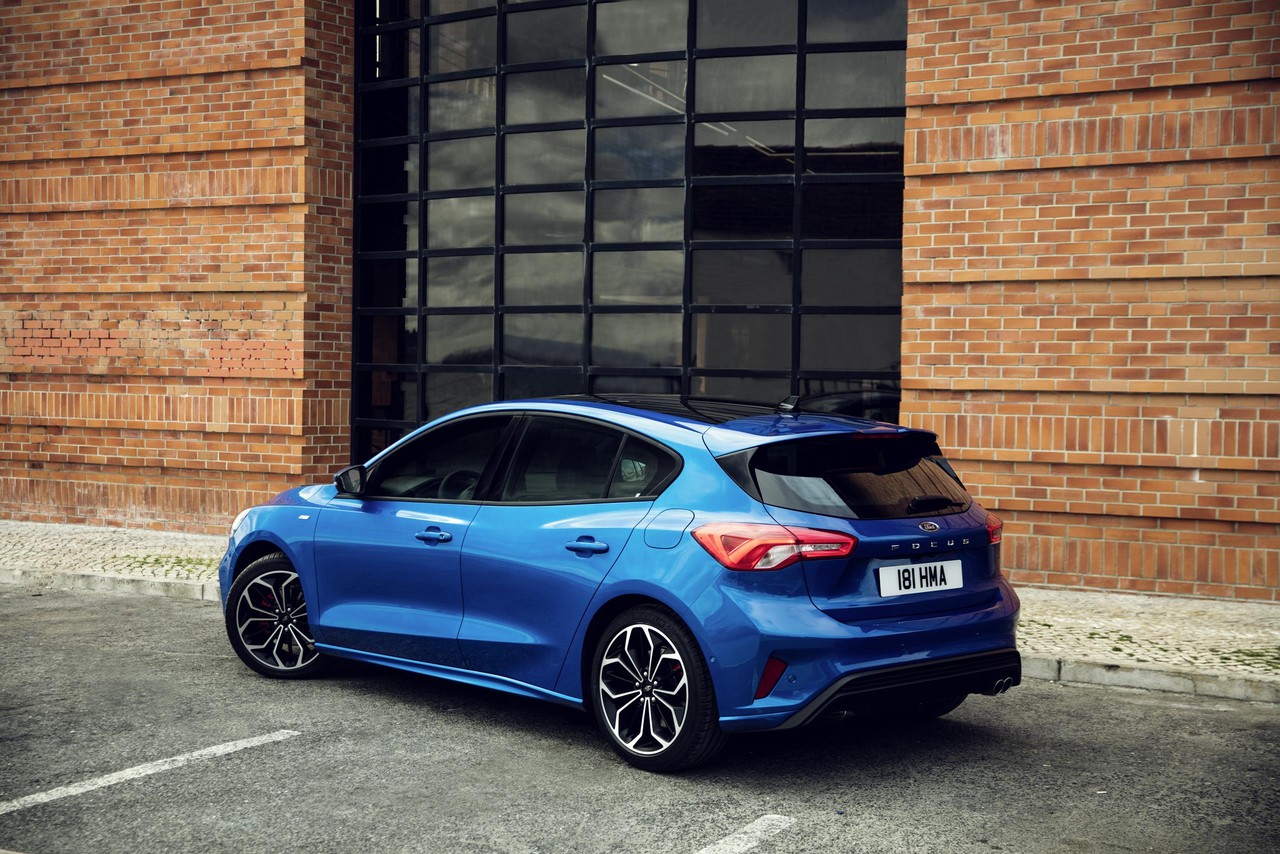
- Fuel-efficient 1.5-litre turbo petrol engine
- Autonomous Emergency Braking standard for Australia
- Good ride/handling balance
- Accurate steering
- Easy-to-use infotainment system
- Traffic sign-based speed limiter is great 99% of the time…
- … but not for time-specific speed limits
- For Focus Trend, front seats lack lateral support
- For Australia, only Focus Active and Focus ST-Line wagon have independent rear suspension
- Blind spot monitoring, cross traffic alert and evasive steering assist only standard for Focus Titanium
- Rear seats don’t fold completely flat
Review: Ford SA Focus (2018-21)
Overview
Released in Australia in December 2018, the Ford SA Focus was available as a five-door hatchback or wagon. Manufactured in Saarlouis, Germany, the front-wheel drive Ford Focus was powered by 1.5-litre turbocharged three-cylinder petrol engines that were mated to eight-speed automatic (torque converter) transmissions.
The Ford SA Focus was initially available in Trend, ST-Line and Titanium variants, of which only the ST-Line was offered as a wagon. In the second half of 2019, the range will be expanded with the Focus Active hatchback which has 17-inch alloy wheels, an additional 34 mm of ground clearance, skid plates (front and rear), a unique front bumper and a black beltline.
1.5 EcoBoost engine
The newly-developed 1.5-litre ‘EcoBoost’ had an aluminium alloy cylinder block and head, double overhead camshafts, four valves per cylinder, variable intake and exhaust valve timing and both port and direct fuel injection systems. To reduce fuel consumption, the EcoBoost engine had:
- An Auto Start-Stop function which enabled the engine to shut down when the vehicle was stationary in traffic; and,
- A cylinder deactivation function that could shut down one of the engine’s cylinders when coasting or cruising. According to Ford, the cylinder could disengage or re-engage in 14 milliseconds.
Over the combined ADR 81/02 test cycle, fuel consumption was 6.4 litres per 100 km.
The eight-speed automatic transmission had –
- Adaptive Shift Scheduling: assessed individual driving styles to optimise gearshift timing – this included gradients (uphill and downhill) and hard cornering; and,
- Adaptive Shift Quality Control: assessed vehicle and environmental information to adjust clutch pressures for ‘consistently smooth gearshifts’.
| Body | Variant | Engine | Trans. | Peak power | Peak torque |
|---|---|---|---|---|---|
| Hatch | Trend, ST-Line, Active, Titanium |
1496 cc turbo petrol I3 | 8sp auto | 134 kW at at 1600-4500 rpm | 240 Nm at 1750-5000 rpm |
| Wagon | ST-Line | 1496 cc turbo petrol I3 | 8sp auto | 134 kW at at 1600-4500 rpm | 240 Nm at 1750-5000 rpm |
Body and dimensions
The fourth-generation Focus was based on Ford’s ‘C2’ global platform. The body featured ultra-high strength boron steel that was produced at Ford’s Saarlouis plant using forty-metre furnaces with gas and magnetic induction. The furnaces heated boron steel plates to 930 degrees Celsius so that they could then be moulded by 1250 tonne presses. After water cooling, the boron steel plates were cut by a 3000 degree Celsius laser beam. Other production techniques for the Ford Focus included:
- A new ‘form and pierce’ process that used cameras to measure the optimal position of front-end mounting holes within tolerances of 0.1 mm. A second camera system monitored the position of the apparatus and could adjust to tolerances of 0.1 mm to account for expansion and contraction in changing temperatures. According to Ford, this process enabled the front-end mounting holes to be positioned with an accuracy of 0.5 mm;
- In a Ford-first, laser-welding technology was used to produce wobble-welded seams; and,
- Tri-focal laser-brazing – which had an operating speed of 60 mm per second – was used for stronger and more precise joints between the roof and body sides.
For comparable variants, the Mk.4 Focus achieved mass reductions of up to 88 kg relative to the Mk.3 Focus .
Compared to the Ford Mk.3 Focus , the body of the Mk.4 Focus achieved a 20 per cent increase in torsional rigidity and a 50 per cent increase in the stiffness of individual suspension attachment points. To improve the stiffness of the rear structure, a wet extruded foam was inserted into the rear underbody cavity during the vehicle’s assembly (a process introduced for the Ford LZ Focus RS ) – under the heat of the paint-drying process, this foam would expand to increase local lateral rigidity by 10 per cent.
Relative to the Ford Mk.3 Focus , the Mk.4 Focus hatchback was 20 mm longer (at 4378 mm), 2 mm wider (1825 mm), 9 mm taller (1493 mm) and had a 51 mm longer wheelbase (2700 mm). Relative to the Ford Mk.4 Focus hatchback, the Mk.4 Focus wagon was 289 mm longer (at 4667 mm) and 19 mm lower (1474 mm), though width and wheelbase length were unchanged. To achieve its drag co-efficient of 0.273 Cd, aerodynamic measures for the Mk.4 Focus hatchback included:
- An Active Grille Shutter that automatically closed when airflow to the radiator was not needed;
- ‘Air-curtains’ that guided airflow across the front wheels to reduce turbulence;
- Air separation elements in the rear bumper and light units;
- Optimised rear spoiler and window strake designs; and,
- Additional underbody shielding for the central tunnel, fuel tank and rear axle.
Suspension
The Ford Mk.4 Focus had MacPherson strut front suspension, though rear suspension differed according to variant –
- The Ford Focus Trend, ST-Line and Titanium hatchbacks had twist-beam (or torsion bear) rear suspension; and,
- The Ford Focus Active hatch and ST-Line wagon had short long arm (SLA) independent rear suspension that was mounted on an isolated rear sub-frame. Furthermore, multi-compound bushes feature different stiffness characteristics when stressed in different directions.
For the Ford Focus ST-Line and Titanium hatchbacks, the suspension was lowered by 10 mm and included unique springs, dampers and stabiliser bars.
Steering
The Ford Focus had a column-mounted Electronic Power Assisted Steering (EPAS) with a ‘Torque Steer Compensation’ feature.
Safety equipment
Standard safety equipment for the Ford SA Focus included dual front airbags, front seat-mounted side airbags, full-length curtain airbags (i.e. for front and rear occupants), ABS, electronic brake force distribution, brake assist, electronic stability control, traction control and front seatbelts with pre-tensioners and load limiters.
As standard, the Ford SA Focus was equipped with the following safety technologies –
- Pre-Collision Assist with Pedestrian and Cyclist Detection: could detect vehicles, people or cyclists that were on or around the road ahead, or who may cross the vehicle’s path. The system would initially issue visual and audible warnings (‘Forward Collision Warning’), while the brakes would be automatically applied if the driver did not respond and a collision was anticipated. By using illumination from the headlamps, the Pre-Collision system also operated at night;
- Lane Departure Warning and Lane Keeping Aid: operating at speeds above 60 km/h, the Lane Departure Warning could issue alerts if it detected that the vehicle was about to cross lane markings and the turn indicators had not been applied. Furthermore, Lane Keeping Aid could apply steering wheel torque to keep the vehicle in its lane;
- Intelligent Speed Assistance with Speed Sign Recognition and Speed Limiter: could detect the current speed limit based on signs and limit maximum vehicle speed;
- Emergency Assistance: in the event of a collision which deployed the vehicle’s airbags or fuel pump shut off, Emergency Assistance could use a synchronised mobile phone to deliver a voice message directly to 000 operators and keep the line open for hands-free communication; and,
- Post-Collision Braking: after a collision, Post-Collision Braking automatically applied moderate brake pressure to reduce the likelihood and impact of a potential secondary collision.
The Ford Focus Titanium was further equipped with –
- Adaptive Cruise Control (ACC) with stop & go and Lane-Centering: operating at speeds up to 200 km/h, ACC could adjust vehicle speed to maintain a safe distance from the vehicle ahead and up to the speed limit. Furthermore,
- The stop & go function could apply the brakes to reduce vehicle speed until stationary by applying up to 50 per cent of maximum braking force. If the vehicle was stationary for less than three (3) seconds, the vehicle would automatically accelerate when the road ahead cleared. For longer stationary durations, the driver could push a button on the steering wheel or depress the accelerator to move away; and,
- Lane Centering monitored road markings and could apply ‘gentle but discernible’ torque to the steering system to help drivers stay centred in their lane when ACC was active. The system also provided visual and audible warnings if it detected a lack of steering wheel input from the driver;
- Blind Spot Information System: used rear radar sensors to detect vehicles approaching from behind and in the driver’s blind spot. If detected, an icon would illuminate in the door mirror on the side of the Ford where the vehicle was detected;
- Cross Traffic Alert and Active Braking: when reversing out of a parking space, Cross Traffic Alert could alert the driver of approaching traffic that may cross the vehicle’s path and automatically apply the brakes; and,
- Evasive Steering Assist: using the radar sensors and forward-facing camera to detect slower-moving and stationary vehicles, Evasive Steering Assist would provide ‘steering support’ at city and motorway speeds to assist drivers in manoeuvring around a vehicle if a collision was imminent.
Euro NCAP testing
In Euro NCAP testing , the Ford Mk.4 Focus received a five star safety rating which included an 85 per cent adult occupant protection rating and an 87 per cent child occupant protection rating. In the frontal offset test, occupant protection was generally rated as good, though chest protection for the driver and lower left leg protection for the front passenger were rated as adequate (i.e. a slight risk of serious injury). While maximum points were awarded in the side impact test, chest protection for the driver in the more severe pole test was rated as adequate.
Brakes
The Ford SA Focus had 282 mm by 25 mm ventilated front brake discs and 271 mm by 10 mm solid rear discs.
Features: Ford Focus Trend
As standard, the Ford Focus was equipped with Ford’s ‘SYNC 3’ operating system, an eight-inch touchscreen, integrated satellite navigation with Traffic Message Channel and MapCare, Bluetooth mobile phone connectivity, voice control/voice recognition, Apple CarPlay and Android Auto smartphone integration, a six speaker sound system and a digital radio tuner (DAB+).
Beyond this, standard features for the Ford Focus Trend included 16-inch alloy wheels with 205/60 R16 tyres, climate control air conditioning, cruise control, four-way manual adjustment for the front seats, directional front halogen fog lamps, rear fog lamp, LED daytime running lights, dusk-sensing headlamps, rain-sensing wipers, rear view camera, rear parking sensors, split/fold rear seats, a leather-wrapped steering wheel, steering wheel gearshift paddles, remote central locking, power adjustable and heated door mirrors, tilt and telescopic steering wheel adjustment, an electrochromatic rear view mirror, an electronic park brake, a trip computer and an immobiliser.
The Ford Focus also had Ford’s ‘MyKey’ which enabled vehicle settings to be set for specific users, such as speed limit reminders and limiting audio volume – these settings would then be applied automatically each time the key was used.
Features: Ford Focus ST-Line
Compared to the Focus Trend, the Focus ST-Line was further equipped with 17-inch alloy wheels with 215/50 R17 tyres, dual-zone climate control air conditioning, directional front LED fog lamps, proximity key (i.e. keyless entry), power folding door mirrors with heating and puddle lamps, push-button start, wireless smartphone charging (Qi standard) and tyre pressure monitoring.
Visually, the Focus ST-Line could be identified by its 17-inch metallic finish alloy wheels, honeycomb grille, unique body kit (including side skirts, rear bumper and rear spoiler), LED tail-lights and chrome twin tailpipes. Interior highlights for the Focus ST-Line included sports seats, flat-bottom steering wheel, red stitching, a dark roof lining and alloy pedals.
The Focus ST-Line was available in a wagon body which provided 1653 litres of storage space. The Focus ST-Line wagon featured ‘Easy Fold Seats’ with integrated remote second-row seat release, a two-tier floor, luggage cover, load compartment loops and roof rails.
Features: Ford Active
The Focus Active had 18-inch alloy wheels with 215/50 R18 tyres and was similarly equipped to the Focus ST-Line, but omitted the Focus ST-Line unique visual cues. Like the Focus wagon, the Focus Active had an integrated remote second-row seat release, luggage cover and roof rails.
Features: Ford Focus Titanium
The range-topping Ford Focus Titanium was distinguished by its 18-inch alloy wheels with 235/40 R18 tyres, 675 watt Bang & Olufsen sound system with nine speaker and subwoofer, partial leather seat trim, six-way power adjustable driver’s seat, heated front seats, variable colour LED ambient lighting, illuminated vanity mirrors and privacy glass.
The Focus Titanium was also fitted with full-LED headlamps which had the following functions –
- Adaptive Front Lighting System with Predictive curve light and sign-based light: used the forward-facing camera to monitor lane markings up to 65 metres ahead, enabling light from the headlamps to be angled into the corner for improved visibility on approach. Furthermore, the ability to interpret road signs could be used to optimise beam patterns so that the beam was widened at junctions and roundabouts;
- Auto High Beam: automatically engaged high beam lighting when safe to do so; and,
- Glare-free high beam: masked high beam illumination to avoid dazzling other drivers.
Visually, the Ford Focus Titanium could be identified by its chrome grille and window detailing.
Active Park Assist 2
As an extra-cost option, the Ford Focus Titanium could be specified with Ford’s ‘Active Park Assist 2 with Park-Out Assist’ which provided fully-automated parking manoeuvres, including gear selection, acceleration and braking. Once a suitable parking space had been identified, the driver could initiate self-parking by engaging neutral and depressing a button on the centre console. Park Assist 2 then controlled forward and reverse gear selection, throttle, braking and steering. Active Park Assist 2 could manoeuvre the Ford Focus into spaces 1100 mm longer than the vehicle and on gradients up to 12 per cent. With the Park-Out Assist function, the vehicle could autonomously exit parallel parking spaces.
The Ford Focus was also available with front and rear parking sensors (Ford’s ‘Front and Rear Park Aid’) and a ‘Distance Indication’ feature which displayed the distance to detected objects on the central touchscreen.
Brochures and specifications
Related links

